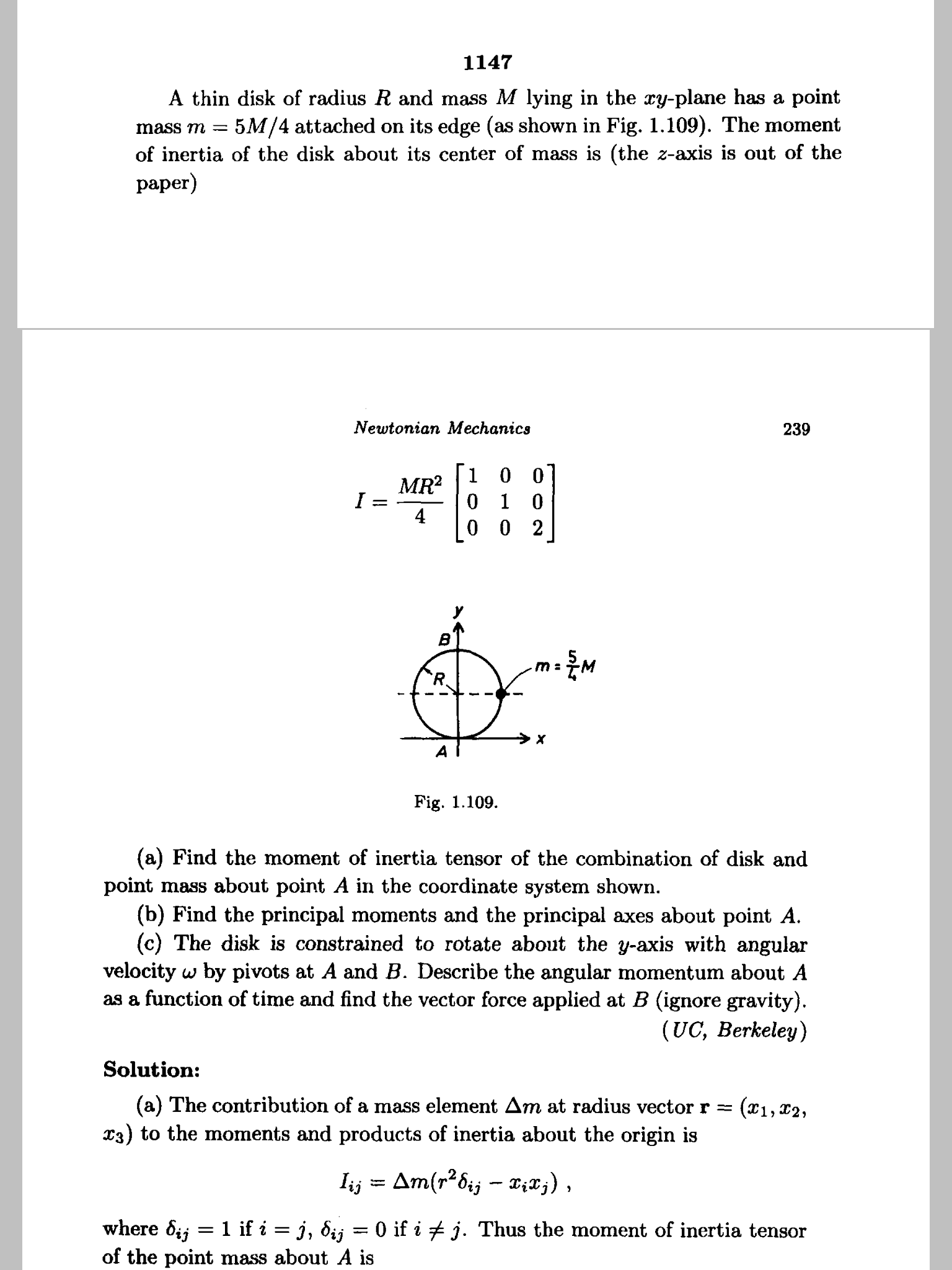Here I have understood the solution but just have a doubt regarding the last question about the vector force at B.
The solution says that as the y axis is a principal axis of inertia,so rotation about this axis will not cause any force to be exerted on the pivots. I do not understand why rotation about a Principal axis will not cause any force to be exerted. Moreover, if the rigid body rotates about that axis,there must be some centripetal force acting upon it. Where does this force come from?
Subsequently,the solution says that the only force on the pivots will be due to the rotating point mass which has a centrifugal force in the rotating frame. Well, what is the source of the necessary centripetal force to the point mass for its rotation?
I am at a very preliminary stage of classical mechanics,I know nothing about the Lagrangian or Hamiltonian mechanics. Please help.

